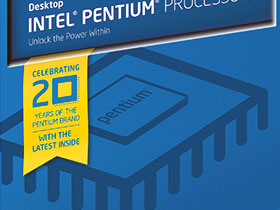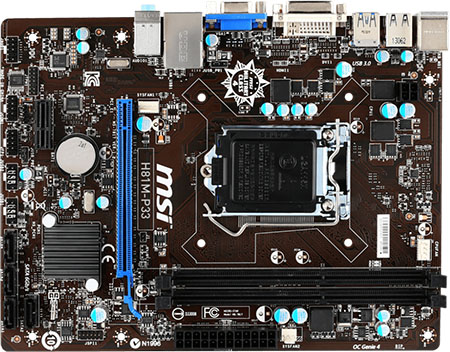The Pentium G3258 Cheap Overclocking Experiment
You wanted a comparison of Intel's Pentium G3258 using low-cost platform components. Can an entry-level motherboard and bundled heat sink still deliver a satisfying overclocking experience, or does going cheap ruin this dual-core CPU's value appeal?
Overclocking The Pentium G3258 Using B81 On A Budget
Last month, we took our first look at Intel’s dual-core Pentium G3258 processor, comparing it to AMD’s Athlon X4 750K. Both CPUs are potentially sub-$100 stunners capable of driving budget-oriented gaming boxes to new heights through tunable multiplier ratios. The Pentium shot up from a stock 3.2 GHz to 4.5 GHz on both of its cores. The Athlon’s 3.4 GHz base clock rate stabilized at 4.3 GHz. Both processors demonstrated impressive gains in our benchmark suite. But it was the overclocked Pentium’s higher performance and lower power consumption across our many tests that compelled us to give it a Smart Buy award.
At the same time, many of you pointed out that we were testing with an expensive motherboard, pricey cooling, and a graphics card that no budget-oriented buyer would bother with.
Some of that was by design. For instance, our GeForce GTX Titan was chosen for its ability to stomp out graphics-imposed bottlenecks. Do you want to know how an overclock affects gaming performance? Remove GPU horsepower as a limiting factor first. Of course you’re not going to save money on a dual-core CPU and then go all extravagant on a Titan. But at least we get some useful information from such a combination of parts.
The motherboard and heat sink, however, weren’t as necessary for our purposes. Although they helped isolate “weak stock cooling” as an overclocking bottleneck, you’re almost certainly going to shop for a cheap motherboard and cooler in your quest to save a bit of scratch.
Around the same time, news broke that certain motherboard vendors were introducing firmware updates for boards without the Z87 or Z97 platform controller hubs that enabled overclocking. That wasn’t supposed to happen. Intel only sanctions multiplier-based overclocking on its enthusiast-oriented chipsets, and lower-end core logic armed with enthusiast functionality undermined one key differentiator.
Frankly, though, the move made sense. It was a bummer that you needed a $100 motherboard to overclock a $75 processor. And so we’re still seeing those BIOS files propagating, making less expensive platforms overclock-friendly.
The Cheap Performance Challenge
I approached a motherboard vendor with an unconventional question: could the company provide me with one board for the Athlon and another for the Pentium that’d offer performance-optimized potential at the lowest price possible? I’d use the boxed heat sink and fan included with both products. The objective would be to push our processors as far as they’d go for as little money as possible. Outperform and underspend. That’d be the game.
Get Tom's Hardware's best news and in-depth reviews, straight to your inbox.
Representatives responded with the A78M-E35 (available for $58 on Newegg) and H81M-P33 (selling for $45 on Newegg). Both represented significant discounts compared to the higher-end motherboards and $70 Noctua cooling solution tested previously. But concerns were expressed about each board’s voltage regulator and unspectacular cooling. Could these things even crest 4 GHz under full load, never mind the overclocks we hit in Intel Pentium G3258 CPU Review: Haswell, Unlocked, For $75?
How’d they stand up to that story’s premium platforms? In a word, amazingly. Understand that the Athlon X4 750K is a 100 W processor, while the Pentium G3258 is a 53 W part. They’ve demonstrated plenty of flexibility, and neither necessarily needs a motherboard with beefy voltage regulation.
It shouldn’t have surprised me, then, that the Athlon hit 4.3 GHz at 1.425 V and ran stably there, just as it did in our previous piece. Where the two configurations differed was thermal margin. Noctua’s NH-U12S gave us more than 25 °C of headroom. AMD’s boxed heat sink and fan (complete with pre-applied thermal interface material) flirted with the 10-degree mark. It’s not the quietest little thing, but it spun up in response to higher demand and kept our test system stable.
The Pentium, also topped with a bundled cooler and factory grease, ran exceedingly warm, too. At the same 4.5 GHz and 1.3 V, it quickly exceeded 90 °C before we intervened, shut down, and reconsidered our approach. Dropping to 4.4 GHz and scaling back to 1.275 V helped a bit. A load temperature around 86 degrees is still warmer than I’d want to see long-term. But with that said, few of us will see loads as demanding as Prime95 for extended periods. After experimenting with 3ds Max—one of the hottest-running real-world apps in the suite—and observing peak temperatures under 80 degrees, I decided to press on with the slightly-lower frequency.
Wait, Did You Say H81?
That’s right. The real star of this show isn’t Intel’s Pentium, but rather the PCB it’s sitting on. Back when you had to choose between Z87 and Z97 for overclocking the G3258, spending more on a motherboard than the processor seemed silly. AMD’s tuned Athlon X4 750K might have trailed in our benchmarks, but at least you could still save a few bucks by buying the low-cost platform.
Then word started spreading that old CPU microcode allowed non-Z core logic to manipulate clock multipliers. Officially, this was a no-no for motherboard vendors to expose publically. But in the words of Ian Malcom, “Life, uh, finds a way.” And so now there are many, many other boards capable of pushing the little dual-core CPU beyond 4 GHz.
The board vendor's team actually offered two suggestions: a B85-based ATX motherboard and that H81-based board we ended up picking. The former simply came too close to higher-end alternatives. Meanwhile a $45 price tag on the diminutive H81-based board undercut even AMD’s mid-range platform. After a quick flash to a beta firmware we found, the H81 platform picked up Intel’s Pentium G3258, opened up ratios as high as 80x, and sent us on our way.
The big question is whether $115 worth of unlocked Pentium and entry-level motherboard can come together and impress us.
Current page: Overclocking The Pentium G3258 Using B81 On A Budget
Next Page Benchmarking Our Low-Cost Pentium G3258 Configuration-
Someone Somewhere First page (in bold heading):Reply
Wait, Did You Say B81?
You mean either H81 or B85, I'm guessing. -
vertexx Are you seriously running the Athlon on DDR3-1600 RAM? Please confirm as it's too difficult to be sure with all of the ridiculous adware you have baked into this article.Reply -
LucoTF Reply13828161 said:First page (in bold heading):
Wait, Did You Say B81?
You mean either H81 or B85, I'm guessing.
LOL
they were offered both and settled on the H81 -
tomfreak U guys should throw in Core 2 quad 9550/9650 and bench together or even the Nehelem quad core to compare.Reply -
cangelini @ Nuckles_56: the modules we used came from one standardized kit. Because the H81 and A78 platforms only offer two slots, we pulled two modules from the kit. The other boards gave us four slots, so we used four modules from the same kit. On an X79- based board, you'd see all eight in play.Reply -
Traciatim @TomFreak, Tom's have already done an old vs new article that tested the core2duo and Quad vs newer i3's an i5's. No reason to redo the tests since you can pretty much extrapolate about where your performance would sit if you look over both articles. Bottom line is it's probably not worth going from a Core2Quad that overclocks pretty reliably to an i3 or Pentium, but in most cases the i3 and newest unclocked Pentium would perform slightly better and use less power.Reply
http://www.tomshardware.com/reviews/ivy-bridge-wolfdale-yorkfield-comparison,3487-9.html
-
bdiddytampa If you are in the US and are close to a Microcenter, they offer a G3258 and MSI Z97 board bundle for $99. Killer deal for a cheap starter system.Reply



